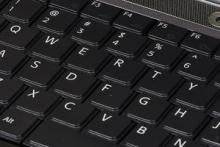As more and more doctors adopt electronic medical records in advance of the federally mandated switch to this form of record-keeping in 2014, an unanticipated side effect could be the emergence of more resistant pathogens in the office, spread unwittingly by increased use of communal keyboards to access and update these records.
The evidence is there. Previous research has shown that computer keyboards are about as dirty as it gets.
Ross Goldberg, a high school student and son of dermatologist Neil Goldberg, decided to test whether alcohol-based hand sanitizer helped prevent keyboard contamination in his father’s dermatology practice.
So what’s a modern, EMR-based clinician to do?
Ross found that use of hand sanitizer before every keyboard touch did notably decrease the number and variety of bacteria that were gleaned from these keyboards, compared to control keyboards that were touched by people not using hand sanitizer. He even surmised that the use of hand sanitizer before each keyboard touch could reduce the spread of the flu virus, were it to take hold in the office setting.
But how likely is it that all office employees will be consistent about such frequent use of hand sanitizer? For doctors who aren’t confident that hand sanitizer could be used consistently in their practices, Ross offered some creative alternatives for reducing the spread of keyboard contaminants, including using voice-recognition software, washable keyboards, and virtual keyboard images. With the transition to EMRs looming, clinicians might do well to give his ideas some thought.
–Heidi Splete (on Twitter @hsplete)


